Chest acne, also known as pustular acne, is a type of acne that appears on your chest, shoulders, and back. It often looks like small, red bumps or clusters of small red dots. Chest acne occurs when the pores of the skin become blocked, trapping oil and bacteria inside.
Chest acne most often affects men, but it can also appear in women. Because chest skin has a higher level of pores than other areas of the body, it is much more likely to be susceptible to the formation of acne.
This condition can be uncomfortable, itchy, and embarrassing. Luckily, chest acne can be treated with the same methods that are used to treat acne on the face. This article will show you the 10 best natural remedies for chest acne.
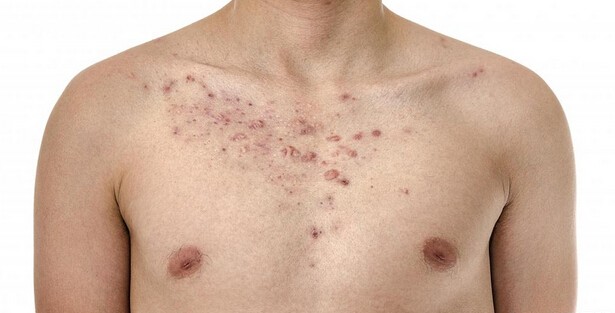
Common Causes of Chest Acne
There are a number of potential causes of chest acne, including:
Hormonal imbalances: Changes in hormone levels can trigger or worsen acne. This may be due to puberty, pregnancy, menopause, or other conditions that cause hormonal fluctuations.
Medications: Certain medications, such as corticosteroids and anabolic steroids, can also cause chest acne.
Genetics: If you have a family history of acne, you may be more likely to develop it yourself.
Diet: Poor diet, especially one that’s high in sugar and refined carbs, can also contribute to chest acne.
Stress: Stress can worsen acne.
Skin care products: Using skin care products that are oil-based or contain pore-clogging ingredients can cause or worsen acne.
Sweat: Sweat can also contribute to acne by irritating the skin and causing the pores to become blocked. Friction from tight clothing can also aggravate the skin and cause acne.
Underlying health conditions: Finally, underlying health conditions like polycystic ovarian syndrome (PCOS) and adrenal gland disorders can also cause chest acne.
Top 10 Home Remedies to Get Rid of Chest Acne Fast
Oatmeal
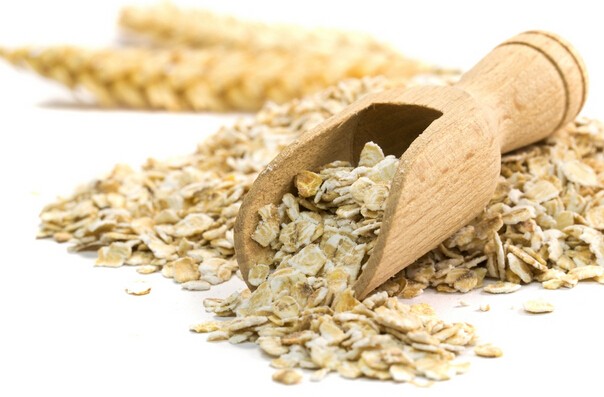
One of the main reasons oatmeal can help get rid of chest acne is that it can help absorb the oil left on the skin. At the same time, it can clean the pores if it has some dirt is left over even after washing.
- Cook the oatmeal.
- Mix a teaspoon of honey and lemon juice with the cooked oatmeal.
- Rub the oatmeal paste on the chest area.
- Leave it on the skin for about 30 minutes.
- Rinse with warm water.
Lemon Juice
One of the main reasons lemon juice can help get rid of chest acne is that it is acidic. What lemon can do is clean the dirt that has been left in the pores for quite a long time.
- Cut a lemon into two and rub the open part of the chest area where there is acne.
- Leave the lemon juice for about a few hours.
- Wash the affected area thoroughly.
- You can do this about 2 – 3 times a week.
Baking Soda
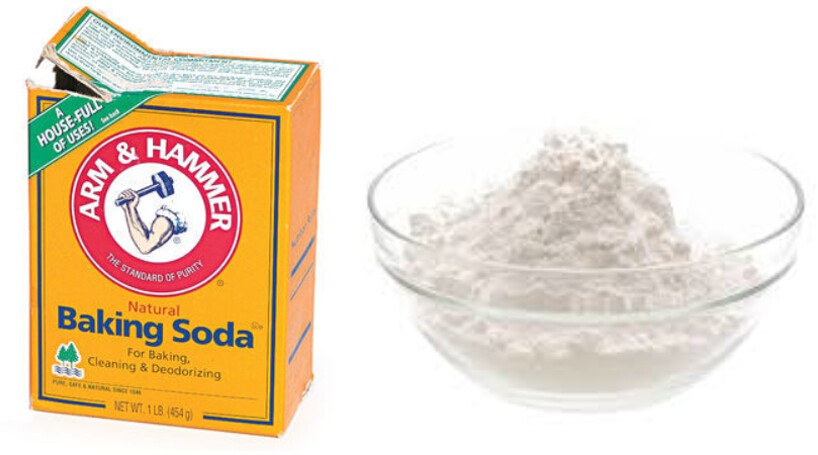
If you would like to exfoliate your skin, you can use baking soda for the skin. It can help make sure that the pores will be removed thoroughly. It also has some anti-inflammatory properties that can help reduce the amount of acne that you have.
- Mix the baking soda with a little bit of water.
- Mix them and place them in the affected area.
- Leave the baking soda with water for about 10 minutes.
- Rinse it off with warm water.
- You can do this twice a week.
Apple Cider Vinegar
When it comes to home remedies, apple cider vinegar is always one of those that are included. Apple cider vinegar can balance the pH level of the skin. When the skin’s fundamental level is okay, it will be harder for the bacteria to penetrate the skin.
- Prepare a teaspoon of apple cider vinegar.
- Place it on a cotton ball.
- Rub the cotton ball with apple cider vinegar on the skin.
- Leave it for about 30 minutes if you do it in the daytime, and leave it overnight if you can.
- Clean it with fresh water.
Cinnamon and Honey
Cinnamon can be beneficial for getting rid of acne because it has some anti-microbial properties that can effectively eliminate the bacteria causing acne. On the other hand, honey can also act as an antibiotic, so when the two are mixed, it can be an excellent combo.
- Wash your chest area and make sure that it becomes clean and dry.
- Mix the honey and cinnamon until you make a paste.
- Place it on the chest area and leave it for about 15 minutes.
- Rinse off thoroughly and let it dry.
Egg Whites
The great thing about egg whites is that they are always available inside your house. Aside from the fact that it can help the skin have the various nutrient and minerals that it needs, it can also help get rid of the scars left behind by the other pimples that have already healed.
- Get an egg and separate the yolk from the egg white.
- Whisk the egg whites until they become fluffy.
- Place the whisked mixture on the face.
- You can add it layer by layer as each layer dries out.
- Pat dry with the use of a soft and clean cloth.
Toothpaste
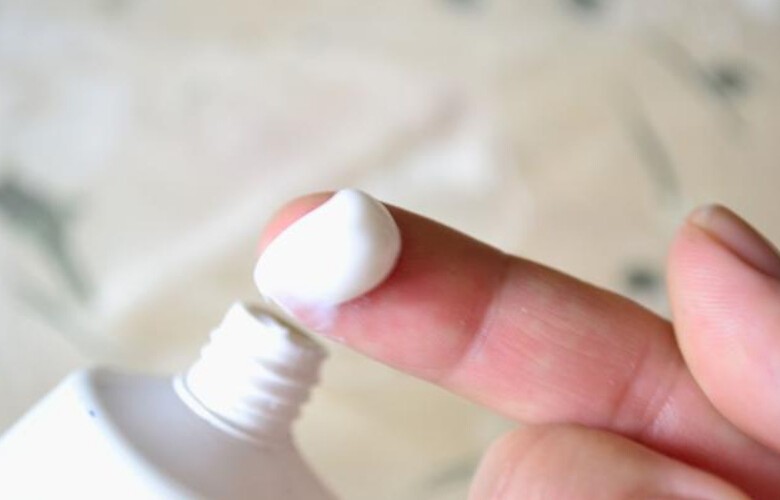
You may not be aware of this, but your toothpaste can be very useful in getting rid of chest acne. Aside from the fact that it can clean the teeth, its micro-bacterial properties can also help eliminate the bacteria causing acne in the chest area.
- Before going to bed at night, place the toothpaste on the affected area of the chest.
- Make sure that you apply it thoroughly and leave it on overnight.
- In the morning, rinse it off with cold water.
- Do this every day until the acne dries out.
Remember, toothpaste can irritate the skin, so you must use this treatment sparingly, using the correct technique. Read this guide before you try this method.
Tea Tree Oil
Many people are unaware that tea tree oil can be used as a natural home remedy for chest acne. Tea Tree Oil is an antiseptic that can clean the pores naturally. It can also help kill the bacteria that are causing acne.
- Get one drop of tea tree oil and place it on the affected area of the skin.
- Rub it a bit and leave it to dry.
- Do this about three times a day.
Aloe Vera
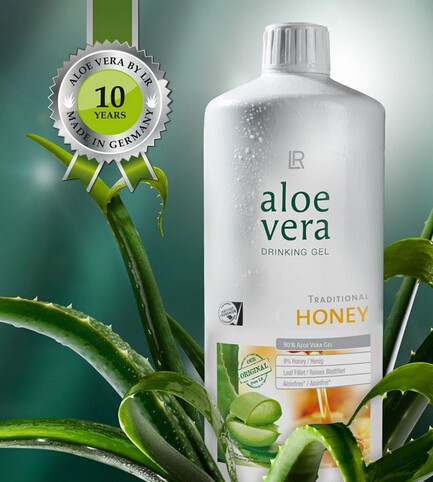
One of the main reasons Aloe Vera can be instrumental is that it has soothing properties, which means that if you feel that your acne is a bit itchy, you can always count on Aloe Vera to make the itch go away. At the same time, Aloe Vera may also help remove acne scars in the chest area.
- Cut an Aloe Vera leaf into several pieces.
- Get the Aloe Vera gel from each leaf part and place it on the chest area.
- Leave it on the skin for about 10 minutes.
- Wait for it to dry.
- Do this about twice a day.
Fenugreek Herb
It seems that more people are familiar with Fenugreek seeds. But Fenugreek herb can still be used to help get rid of chest acne. It has anti-inflammatory and antiseptic properties that can help cure chest acne.
- Prepare clean water and mix the Fenugreek herb until it forms a paste.
- Place the paste on the chest area and leave it for about 15 minutes.
- Wash with warm water after.
- You can use this method about 2 – 3 times every day.
How to prevent chest acne?
There are a few things you can do to prevent chest acne:
- Wash your chest with a gentle cleanser twice a day.
- Make sure you shower regularly and wash your chest with mild soap.
- Exfoliate your chest once a week to remove dead skin cells.
- Avoid touching or rubbing your chest.
- Avoid wearing tight-fitting clothing or anything that will trap sweat and oil on your skin.
- Wear loose-fitting clothing made from breathable fabrics.
- Keep your skin hydrated by drinking plenty of water and using a moisturizer on your chest area.
- Shower after sweating to remove bacteria and oils from your skin.

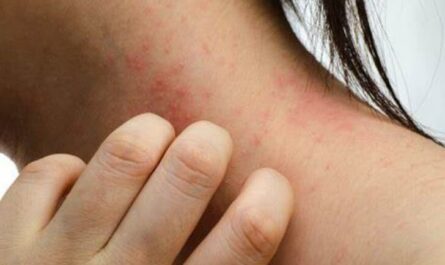
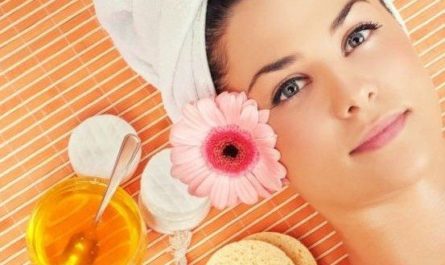

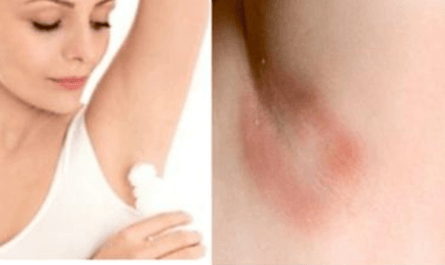
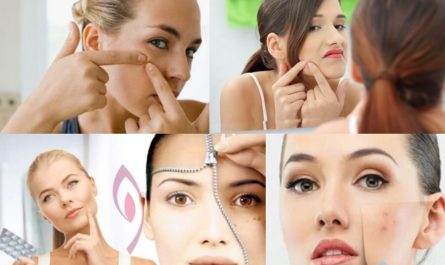
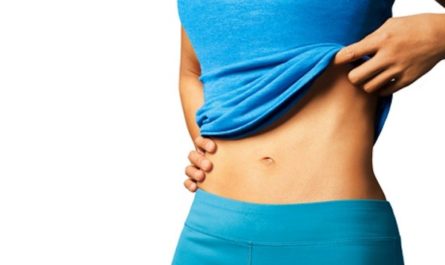
Awesome post!!. i really loved it looking forward to seeing your posts.
I found the best remedies to get rid of acne in this article. I have acne prone skin and these remedies are very helpful for me. I am going to try these remedies for treating my acne. Thanks for sharing.